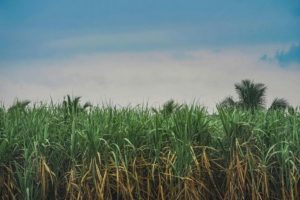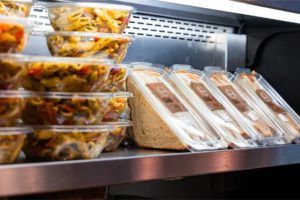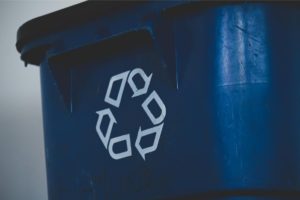At a Glance
- PLA and PET go head-to-head — PET wins on cost, clarity, and recycling; PLA is plant-based but limited.
- PET leads with strong barriers, low cost, and solid infrastructure.
- PLA struggles with heat, moisture, and composting challenges.
- Smart brands mix and match — PET for most, PLA where it fits.
“Ding, ding, ding! Everyone gather ’round! It’s time for our champion of freshness, PET (polyethylene terephthalate), to defend its title as the Ultimate Food Packaging Material!”
Okay, it might not rival the thrill of a big boxing match, but it’s a fun way to think about the material options you, as a food industry pro, could consider.
Consumers are increasingly eco-conscious. Now, you need to consider “sustainability” along with shelf life, cost, durability, clarity, and safety. You may also have heard about bioplastics entering the packaging market. But what are bioplastics? Are they better than PET? If so, in what ways?
Conor Carlin, President of Clefs Advisory LLC, joined us for a conversation this week. With expertise spanning materials, packaging technologies, policy, commercial strategy, and market intelligence, Conor operates at the intersection of packaging and sustainability. His experience includes serving as the 2024 President of the Society of Plastics Engineers and his previous role as General Manager for ILLIG in North America.
In this article, as well as in parts II and III, we’ll explore bioplastics. We will focus on PLA (Polylactic Acid), PHA (Polyhydroxyalkanoates – try saying that!), and PEF (Polyethylene Furanoate). Sorry for all the long chemical names — we know it’s a lot! We’ll compare each material option to PET, the most commonly used packaging material for fresh food applications. We’ll examine procurement, production, cost, performance, and environmental sustainability.
Is there a new contender ready to challenge PET’s dominance? Let’s step into the ring and see what our first challenger brings to the fight. Enter PLA.
Why PET is the Current Packaging Champion
 Before we take a closer look at our first contender, let’s take a moment to discuss why PET is the preferred option for packaging fresh food.
Before we take a closer look at our first contender, let’s take a moment to discuss why PET is the preferred option for packaging fresh food.
PET has earned its championship belt through decades of reliable performance. This petroleum-based polymer meets all the key requirements for food packaging. It has low oxygen transmission rates, high water vapor transmission rates, strong crystallinity, and excellent impact strength. Simply put, PET is a fabulous material that’s highly efficient and manufactured on a massive global scale.
PET’s clarity makes it great for food products. When customers see appealing packaging, they’re more likely to make a purchase. Its lightweight properties protect products while minimizing shipping costs. However, PET’s real strength lies in its established infrastructure, which provides reliable supplier availability.
Meet the Challenger: What Exactly is PLA?
Polylactic acid (PLA) represents the bioplastics revolution’s first serious contender. PLA is made from renewable sources, including corn, sugarcane, and tapioca. It begins with plant sugars that bacteria, such as Lactobacillus, ferment into lactic acid. Then, this lactic acid is turned into plastic.
Key players are NatureWorks, Total Corbion, and Zhejiang Hisun in China. They are all boosting production with new facilities in the US, Thailand, and elsewhere.
Production and Procurement: The Supply Chain Showdown
PET’s Mature Infrastructure
PET benefits from decades of supply chain optimization. The production process is now relatively easy to scale and predict. It uses chemical synthesis instead of biological methods. In simple terms, this consistency means manufacturers achieve the same performance each time.
Global production capacity provides numerous sourcing options. This leads to competitive pricing, which helps keep costs down.
PLA’s Growing but Challenging Network
 PLA production presents challenges due to its dependence on natural resources. PLA starts with plant materials that are fermented (similar to how milk becomes yogurt), and this natural process can vary from batch to batch. It’s like baking bread — sometimes it rises perfectly and sometimes it doesn’t.
PLA production presents challenges due to its dependence on natural resources. PLA starts with plant materials that are fermented (similar to how milk becomes yogurt), and this natural process can vary from batch to batch. It’s like baking bread — sometimes it rises perfectly and sometimes it doesn’t.
The problems don’t stop there. PLA is derived from crops such as corn and sugarcane. Floods, fires, or droughts can damage these crops. When crops experience problems, PLA prices fluctuate unpredictably. Regular plastic doesn’t have this issue because it is derived from oil, which has relatively stable pricing (most of the time).
There’s also an important question: should we use farmland to grow food for people or materials for packaging? It’s a fair point.
Performance Face-Off: Where Each Material Excels
Here’s where real-world performance differences become critical. PET and PLA don’t perform well in high heat, e.g., above 140°F. They each have specific temperature limits that determine their applications.
PET performs well within its temperature range and remains strong for most food packaging applications. However, it can’t handle high temperatures, so it’s not suitable for microwaves or commercial heat lamps. That said, PET can be modified for hot-fill applications (temps up to 185°F) and for some oven-ready packaged meals. In the latter case, PET is crystallized to become CPET and can withstand temperatures over 400°F! PLA has lower temperature limits (140°F–150°F). These restrictions can lead to significant issues in the food service industry, though crystallized PLA (CPLA) has also been commercialized with some applications in coffee capsules.
Consider this scenario: a customer receives hot soup with PLA cutlery. What should be a simple dining experience turns into a disaster as the utensils begin to melt in the hot liquid. Before they know it, their spoons begin to droop like a sad, wilting flower.
PLA is ideal for cold drinks, such as stadium beer cups. However, it can cause issues with hot foods, warm storage, and transporting items in hot weather.
Barrier Properties and Shelf-Life Performance
PET offers excellent barrier properties. It effectively keeps out oxygen and moisture. This leads to a longer shelf life for products. In fresh food, every day of shelf life matters for profit. This advantage is essential.
PLA offers adequate protection for dry goods but struggles with high-moisture or fatty foods. Its barrier properties aren’t as robust as those of PET, potentially requiring shorter shelf-life expectations.
The Economics: Counting the Real Costs
 Currently, PLA costs significantly more than PET. As of August 2025, food grade PLA was approximately $3.10–3.25/kg, or $1.41–1.47 per pound. Premium pricing presents major challenges in fresh food markets, particularly due to narrow profit margins.
Currently, PLA costs significantly more than PET. As of August 2025, food grade PLA was approximately $3.10–3.25/kg, or $1.41–1.47 per pound. Premium pricing presents major challenges in fresh food markets, particularly due to narrow profit margins.
The price gap influences PLA adoption. It often depends on the brand’s position and what customers are willing to pay for the perceived environmental benefits. Premium brands can sometimes justify their high prices, but mass-market items often struggle with costs.
PET’s global production offers steady, competitive prices. This helps with economic predictability for long-term planning.
Environmental Impact: The Complicated Truth
PLA’s Sustainability Promise… and Reality
PLA’s environmental story is complex. While made from renewable sources, several factors complicate its sustainability profile:
- Industrial composting needs specific conditions for PLA. It breaks down properly at temperatures around 140°F. Controlled humidity and oxygen levels are also important. Under these conditions, PLA can decompose in 60 to 90 days. Home composting won’t work; PLA will sit in backyard compost piles for years without degrading.
- Limited infrastructure: Industry surveys indicate that there are limited facilities in the U.S. that are capable of effectively handling compostable packaging. This seriously limits options at the end of the packaging’s life. PET holds the resin identification code of one, meaning it is widely accepted in Material Recovery Facilities (MRFs). PLA has a resin code of seven, meaning “other.” Products with this code are redirected to landfills or are incinerated.
- Recycling stream contamination: PLA’s density similarity to PET makes automated separation difficult. As PLA adoption increases, it could contaminate traditional plastic recycling streams.
PET’s Recycling Advantage
 Despite being petroleum-based, PET benefits from established recycling infrastructure and high recyclability rates. Mechanical recycling is a common practice, and new chemical recycling methods offer additional opportunities for a circular economy.
Despite being petroleum-based, PET benefits from established recycling infrastructure and high recyclability rates. Mechanical recycling is a common practice, and new chemical recycling methods offer additional opportunities for a circular economy.
Your Action Plan: How to Win the Packaging Materials Game
Making the wrong packaging choice could cost you customer trust, inflate expenses, and damage your brand. But following the correct strategy positions you as an industry leader while protecting your bottom line.
Step 1: Audit your current applications. Make a list of packaging needs based on:
- Temperature requirements
- Shelf-life needs
- Cost sensitivity
- Performance demands
This reveals where PET excels and where alternatives might make sense.
Step 2: Evaluate PET’s long-term benefits.
Keep in mind PET’s main benefits:
- Strong barriers
- A solid recycling system
- Cost savings
- Dependable performance
Think about whether better recycling messages could solve sustainability issues more than changing materials.
Step 3: Identify strategic opportunities. Once you understand where PET excels, look for areas where PLA excels. These include premium cold drinks, single-use items, or products that can charge more for their sustainability message. The goal is strategic supplementation, not wholesale replacement.
Step 4: Calculate true total cost.
Review all costs, such as:
- Processing changes
- Shelf-life modifications
- Customer training
- Disposal logistics
- Supply chain trustworthiness
Many find that PET’s steady costs make it cheaper, even with sustainability efforts.
Step 5: Test and plan for the long term. Conduct small-scale trials with alternatives, and also test enhanced PET applications with improved recycling programs. Develop a materials strategy that leverages the strengths of each option — perhaps by combining PLA for premium applications with PET for core products.
Ding, Ding, Ding: Round One Results
 PLA brings real innovation and environmental benefits, but it’s not ready to replace PET everywhere. Think of PLA like a talented rookie player — skilled in some areas but still developing.
PLA brings real innovation and environmental benefits, but it’s not ready to replace PET everywhere. Think of PLA like a talented rookie player — skilled in some areas but still developing.
PLA can’t handle heat, which rules it out for many food packaging uses. It also costs more, has limited composting options, and can mess up recycling streams. PLA looks a lot like PET, but it’s chemically different. If it ends up mixed into PET recycling batches, it can contaminate the stream and degrade the quality of recycled PET. That’s a big issue for recyclers trying to maintain high-quality outputs. This makes PLA good for specific jobs, not as a complete replacement for PET.
But don’t write off PLA completely. For cold drinks in places that properly collect containers, PLA works well and keeps its environmental promises.
Innovative companies don’t try to switch everything to PLA at once. They determine what each material excels at, then select the most suitable one for each task.
Currently, PET retains its championship title because it performs better, costs less, and has systems already in place. But PLA is still improving and could win more fights in the future.
Coming up in Part II: PHA enters the ring with promises of superior biodegradability through bacterial production. Can this fermentation-based challenger overcome PLA’s limitations while taking on PET’s dominance?
Do you want to learn more about packaging solutions for fresh food? Visit our Learning Center today and explore a vast array of topics.
Would you like to know more about Conor Carlin and his work at Clefs Advisory LLC? Connect with him on LinkedIn today.

